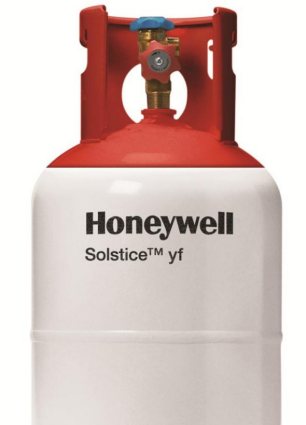More A2L flammable safety studies
- PostedPublished 14 June 2015
Growing use of flammable refrigerants like R1234yf has prompted the United States Air Conditioning, Heating and Refrigeration Institute (AHRI) to establish a subcommittee that will review safety issues related to mildly flammable ‘A2L’ class substances.
In addition to representation from the refrigeration and air conditioning sector, the safety subcommittee will comprise flammability experts and people from the commercial and residential building industry.
AHRI research director Xudong Wang said the organisation will “play an important role by establishing collaboration within the industry and among relevant organisations, and by conducting research and publishing relevant results”.
The results of the study will be shared with industry regulators and standards organisations, because Dr Wang said “the industry needs to develop a complete list of research needs in order to provide the scientific results necessary to support the safe use of flammable refrigerants in the future”.
Meanwhile, the American Society of Heating, Refrigerating, and Air-Conditioning Engineers (ASHRAE) has provided $US195,000 to the University of Maryland’s Department of Fire Protection Engineering to conduct a project called “Improve the Accuracy and Reproducibility of the Flammability Test Method”.
Current testing is not considered accurate enough to precisely determine the flammability of A2L refrigerants, particularly blends containing A2L substances that may receive A1 (non-flammable classification).
Because the flames from some A2L refrigerants are unstable, it is difficult to measure flammability, while blends can create problems identifying the boundary between A1 and A2L classification.
Colour-coded cylinder conundrum

AS new gases begin to proliferate, AHRI is also conducting a survey in the US to investigate how industry uses refrigerant container colour coding as means of identification.
Different operating pressures and flammability levels are causing concerns about safety and the potential damage to equipment if refrigerants are used for incorrect applications.
In most countries there are standards governing the clear identification of hazardous material containers, while AHRI also publishes guidelines specifying colours to refrigerant containers that help identify their contents, which AHRI senior vice president Henry Hwong describes as “another layer of identification”.
“Since there are new refrigerants and in turn new container colours, we are addressing concerns about confusion and the potential misidentification if container colours appear similar,” he said.
“Refrigerant container labelling and markings should always be the primary means to identify the content”.
- CategoriesIn SightGlass
- TagsA2L refrigerant, Flammable refrigerants, HFO, SightGlass News Issue 2





